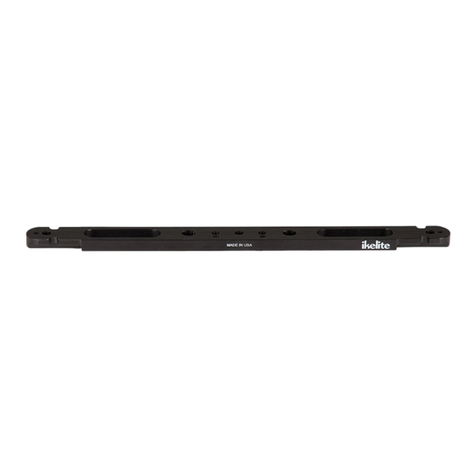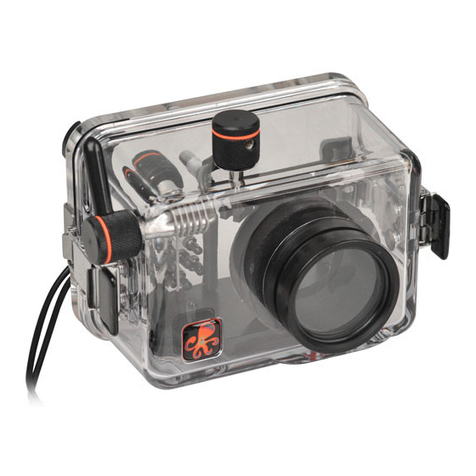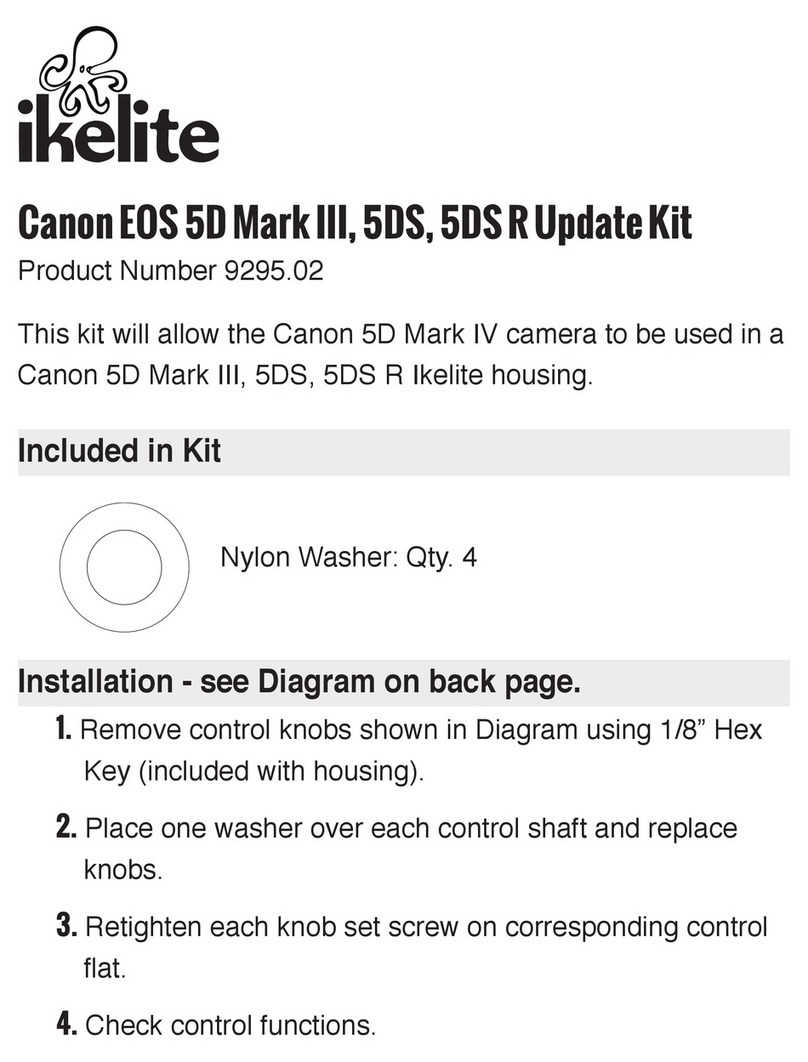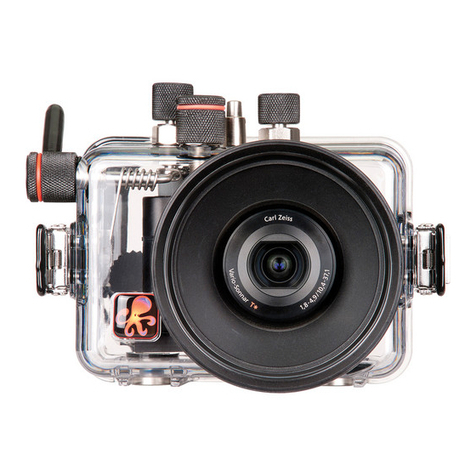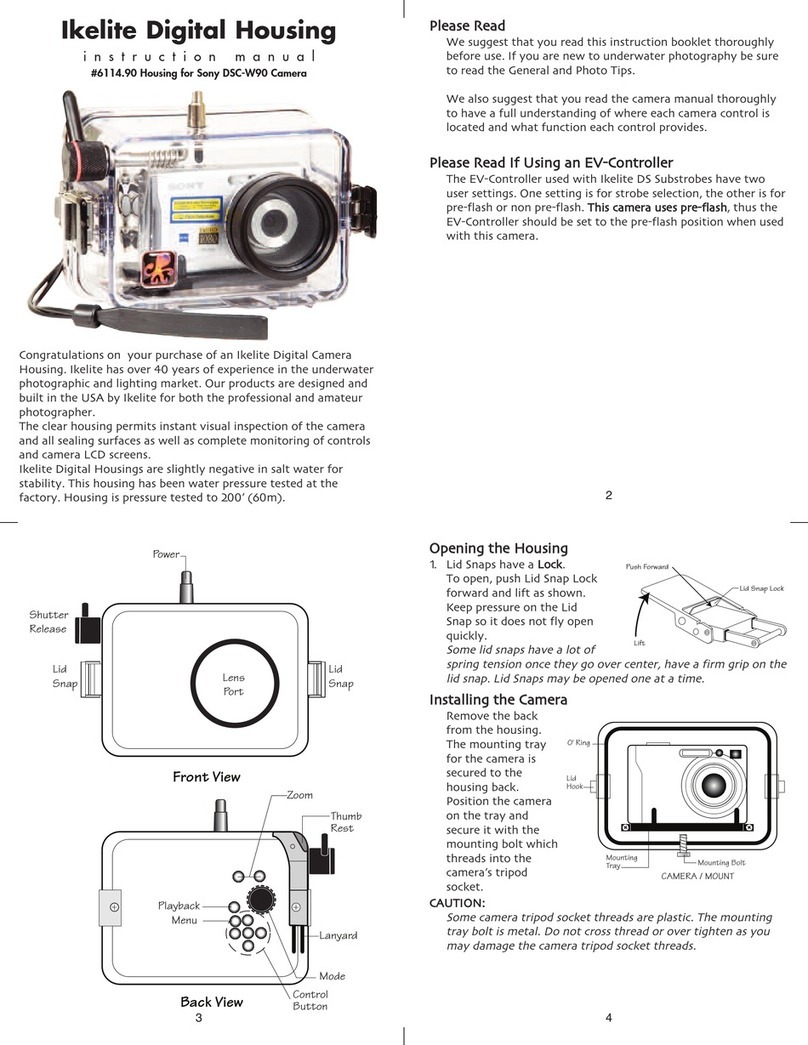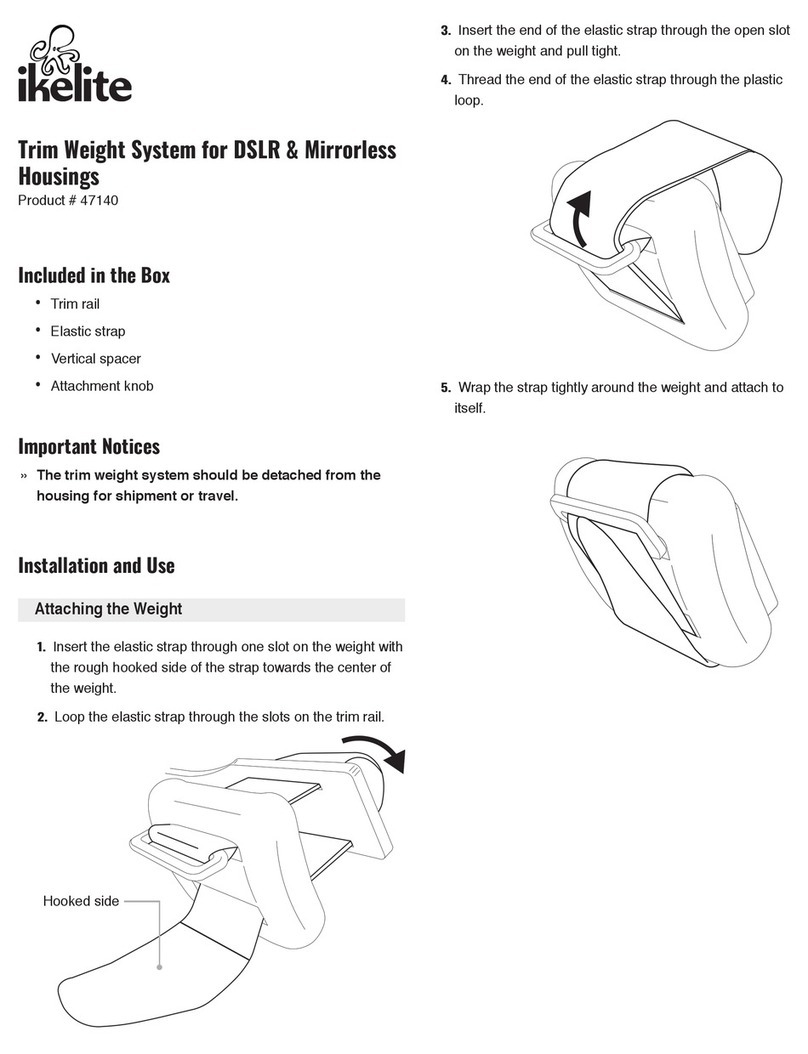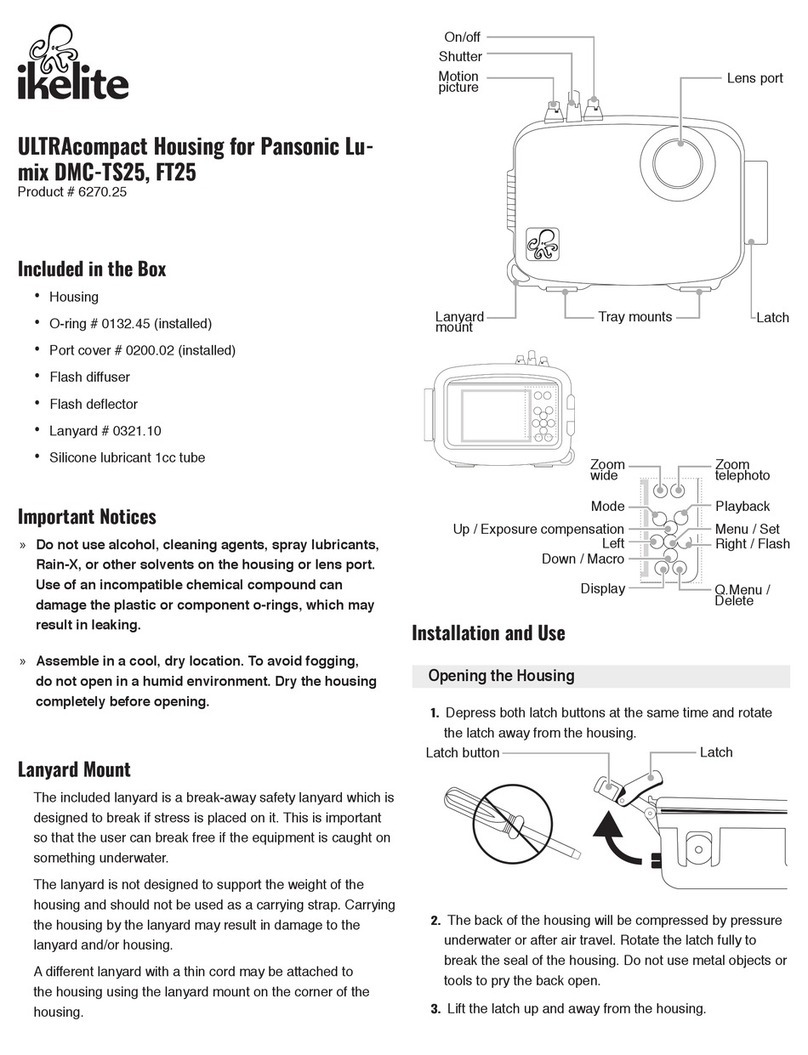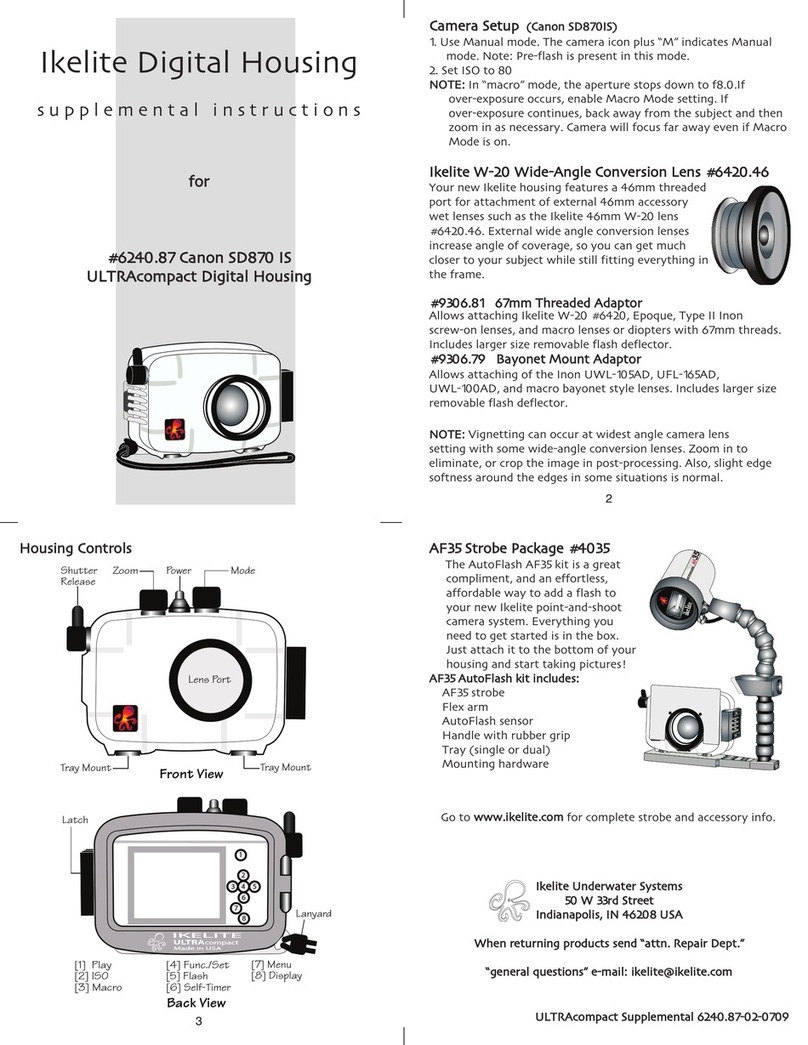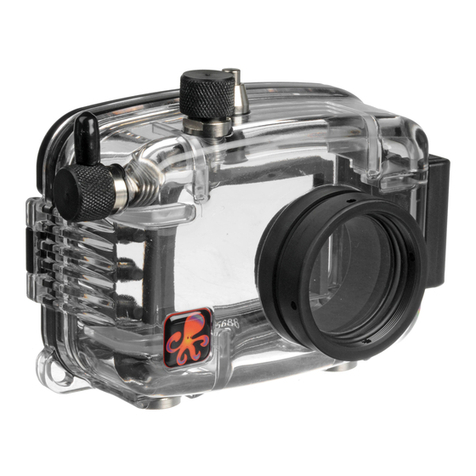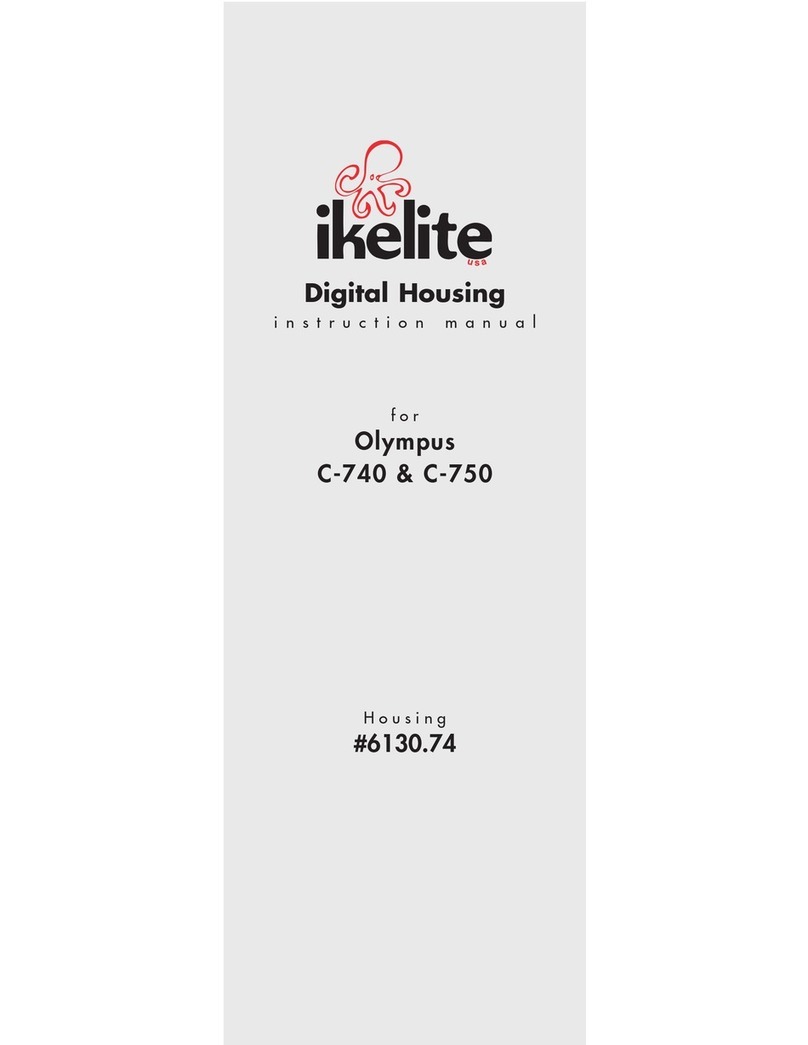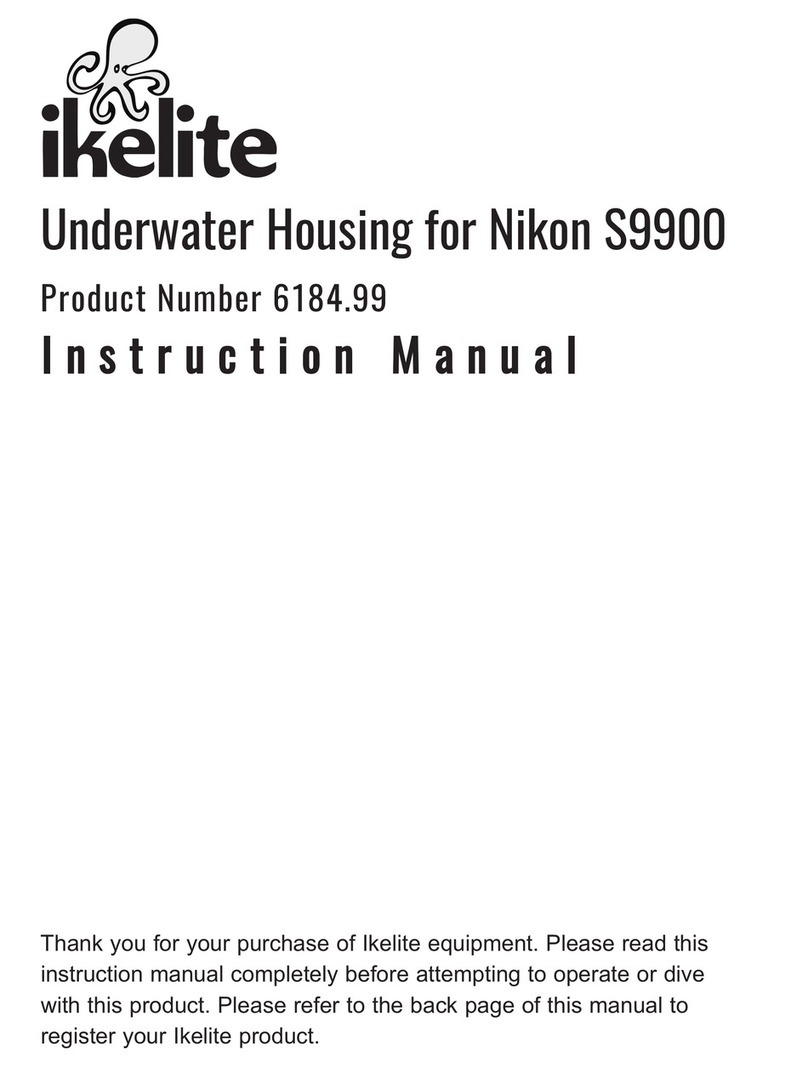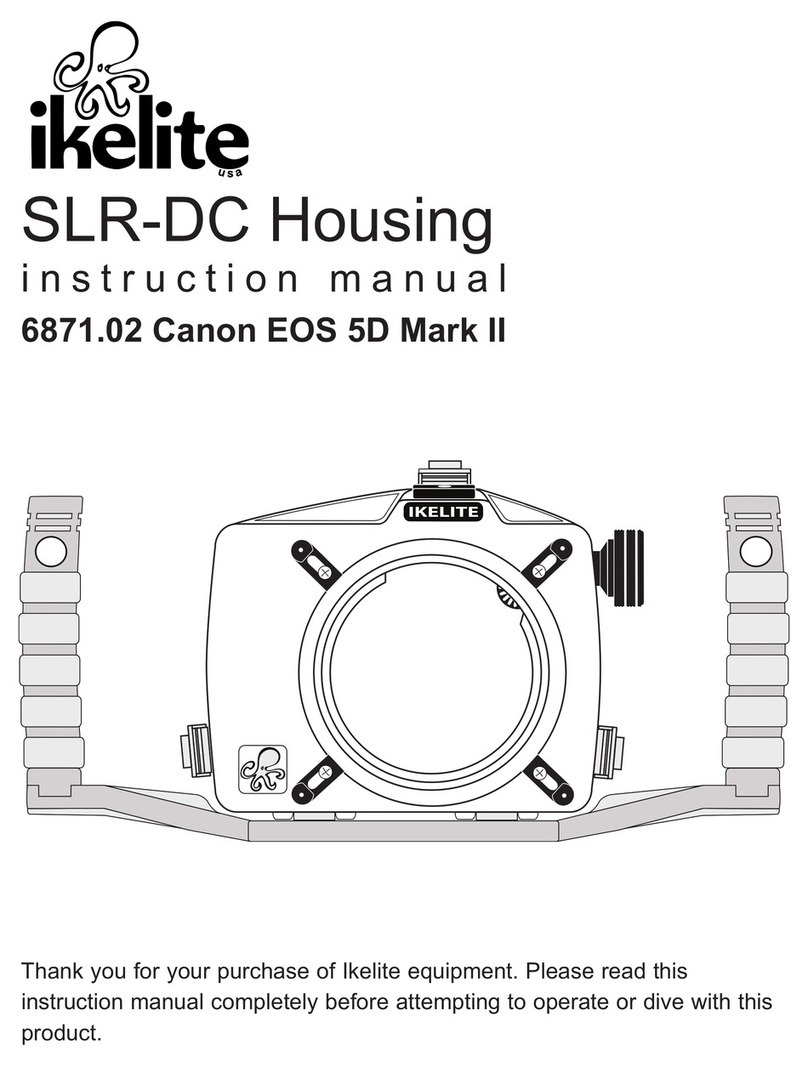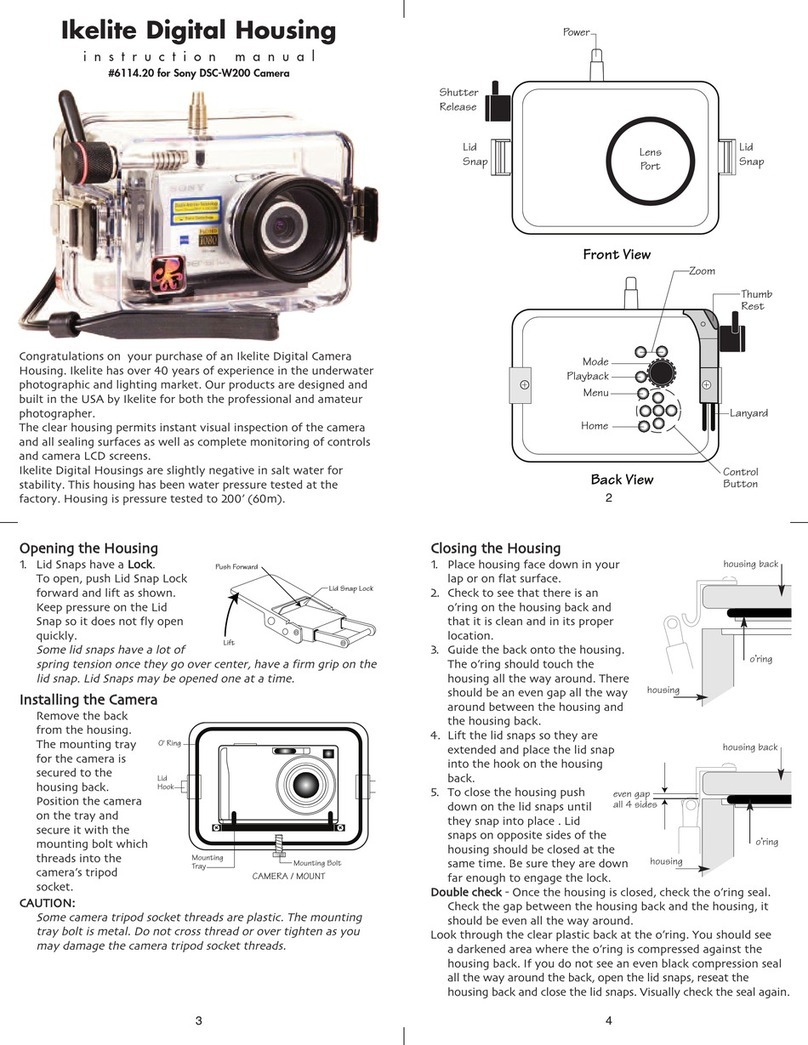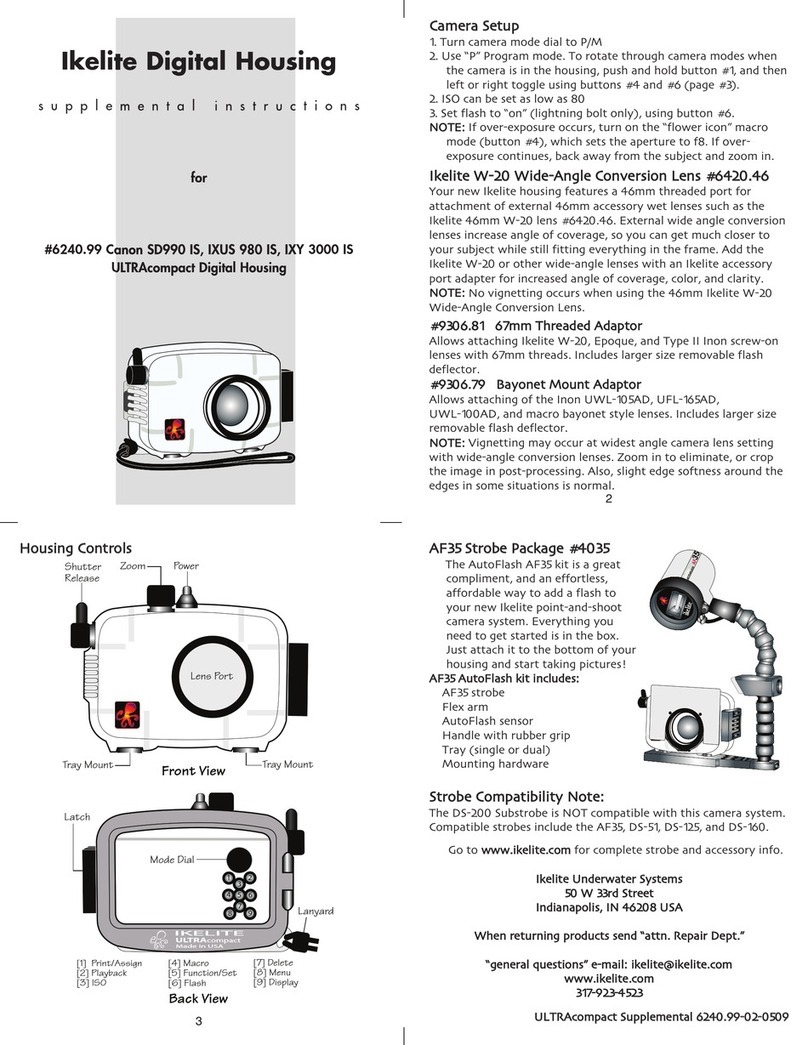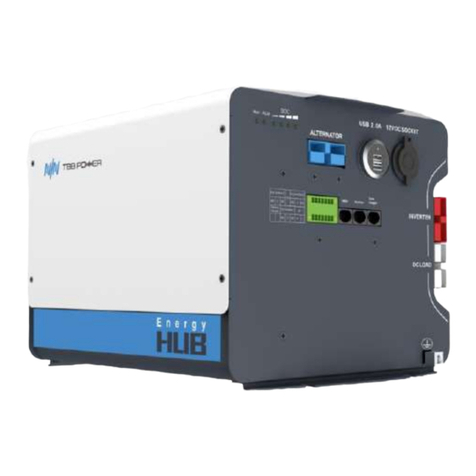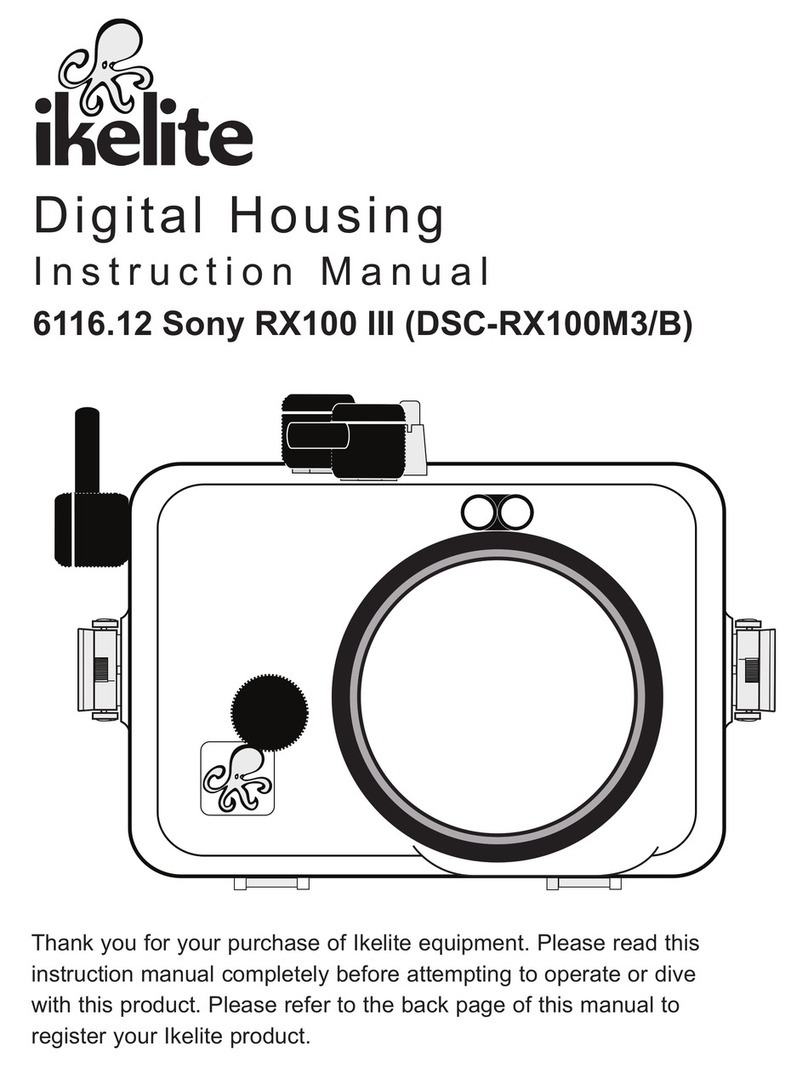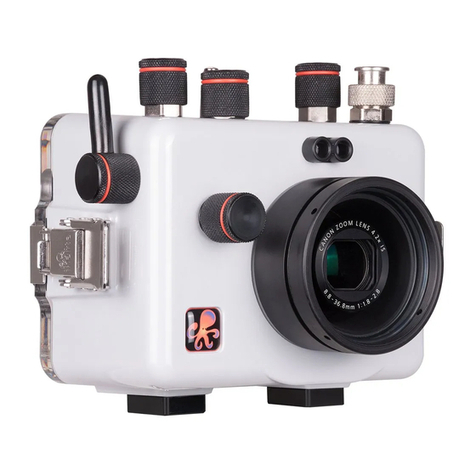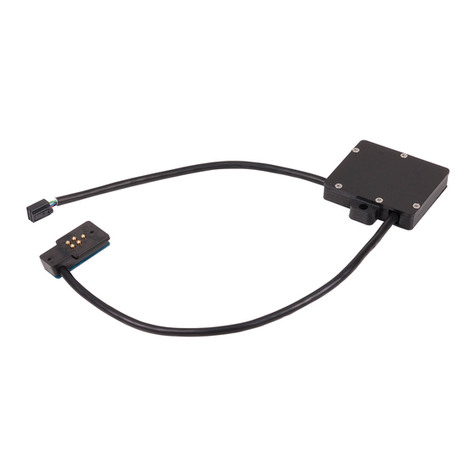
13
Substrobe
DS125
EV Controller
Ball Socket
Arm
O
Op
pt
ti
io
on
na
al
lA
Ac
cc
ce
es
ss
so
or
ri
ie
es
s
S
Su
ub
bs
st
tr
ro
ob
be
eD
DS
S1
12
25
5P
Pa
ac
ck
ka
ag
ge
e##33994444..7777
The Substrobe DS125 package
includes the Substrobe DS125, the EV
Controller, ball socket arm and
charger. The EV Controller provides
10 manual power settings in 1/2 stop
increments. An external strobe offers
several advantages over using the
camera’s built-in flash. External
strobes move the flash away from
the camera lens which helps reduce
backscatter. They also expand
lighting options to achieve the best
lighting for different subjects. A
second external digital strobe
package can be added to fill the
shadows and produce more realistic
photographs.
The Substrobe DS125 covers the
equivalent of a 18mm lens, 100
degrees. It is the ideal choice when
using accessory wide angle lenses
greater than 28mm.
N
NO
OT
TE
E:
:
Optional Tray and
Release Handle
required to mount
Substrobes.
12
Substrobe
DS51
EV Controller
Ball Socket
Arm
O
Op
pt
ti
io
on
na
al
lA
Ac
cc
ce
es
ss
so
or
ri
ie
es
s
S
Su
ub
bs
st
tr
ro
ob
be
eD
DS
S5
51
1P
Pa
ac
ck
ka
ag
ge
e##33994444..5577
The Substrobe DS51 package includes
the Substrobe DS51, the EV
Controller and ball socket arms. The
EV Controller provides 10 manual
power settings in 1/2 stop
increments. An external strobe
offers several advantages over using
the camera’s built-in flash. External
strobes move the flash away from
the camera lens which helps reduce
backscatter. They also expand
lighting options to achieve the best
lighting for different subjects. A
second external digital strobe
package can be added to fill the
shadows and produce more realistic
photographs.
The Substrobe DS51 covers the
equivalent of a 28mm lens. It is the
ideal choice when using only the
camera lens or the camera lens with
a macro accessory lens.
If an accessory wide angle lens wider
than 28mm is used, the ideal
lighting choice is the Substrobe
DS125, which covers 100 degrees, or
two Substrobe DS51’s can be used.
N
NO
OT
TE
E:
:
Optional Tray and
Release Handle
required to mount
Substrobes.
14
M
Ma
ai
in
nt
te
en
na
an
nc
ce
e
The Ikelite Digital Housing should be given the same care and
attention as your other photographic equipment. In addition to
normal maintenance we recommend that the housing be returned
to Ikelite periodically to be checked and pressure tested.
1. D
Do
oN
No
ot
tleave the camera and housing in direct sunlight for
prolonged periods. Heat may damage the camera.
2. D
Do
oN
No
ot
tship the camera in the housing.
3. Before using the housing, always check the tightness of the s
se
et
t
s
sc
cr
re
ew
win each control knob.
Check each c
co
on
nt
tr
ro
ol
lg
gl
la
an
nd
dpenetrating the housing to make sure
they are tight. There is a slight chance that either could vibrate
loose during travel.
4. Keep the back o’ring clean and lightly lubricated. To lubricate
remove the o’ring from the back. Put a small amount of lkelite
lubricant on your fingers. Draw the o’ring through your fingers
to apply a light coating of lubricant. Only apply enough
lubricant to make the o’ring feel slick. D
Do
oN
No
ot
ts
st
tr
re
et
tc
ch
ht
th
he
eo
o’
’r
ri
in
ng
g.
This light coating of lubricant will help to keep the o’ring from
drying out and will help to show a dark sealing line when the
housing back is properly sealed.
5. Keep the area where the o’ring fits and the sealing surface of
the housing clean.
6. Rinse the housing exterior thoroughly in fresh water after each
salt water use. Dry with a soft cloth. Dry lens port to eliminate
water spotting.
After several uses in salt water soak the housing exterior in a
mild soap solution, rinse and dry before storage. When storing
the housing, remove the back o’ring, lightly lubricate and place
in a plastic bag. Place the plastic bag with o’ring inside the
housing for safe keeping.
C
CA
AU
UT
TI
IO
ON
N
N
Ne
ev
ve
er
ru
us
se
es
sp
pr
ra
ay
yl
lu
ub
br
ri
ic
ca
an
nt
ts
sa
as
st
th
he
ep
pr
ro
op
pe
el
ll
la
an
nt
ti
in
ng
gr
re
ed
di
ie
en
nt
tc
ca
an
n
c
ca
au
us
se
et
th
he
ep
pl
la
as
st
ti
ic
ch
ho
ou
us
si
in
ng
gt
to
oc
cr
ra
ac
ck
k.
.
15
C
Co
on
nt
tr
ro
ol
lM
Ma
ai
in
nt
te
en
na
an
nc
ce
e
Ikelite controls are designed to provide years of reliable service
with minimal maintenance.
1. Push button controls require no maintenance other than rinsing
in fresh water after saltwater use. If a push button control
becomes difficult to push or if it sticks when depressed, soak the
housing in luke warm fresh water. After a few minutes operate
the push button. If this does not correct the problem, return the
housing to Ikelite for maintenance.
2. Some of the controls have long shafts. These controls can be
pulled out, exposing the shaft (see drawing).
To lubricate the control, gently pull on the knob until the
stainless steel shaft is exposed. Lightly lubricate the shaft, then
move the shaft in and out several times. This will lubricate the
x’ring in the Ikelite control gland. This should be done before
using the housing after a prolonged storage period, or once a
week when the housing is in use.
housing
lubricate shaft
pull out to
expose shaft
